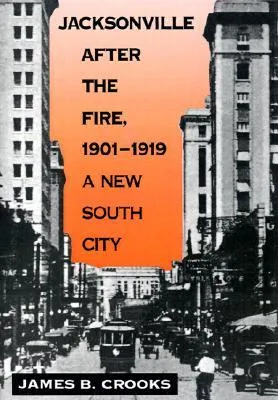Jacksonville after the Fire, 1901-1919: A New South City
By (author): "James B. Crooks"
ISBN0813010675
ISBN139780813010670
AsinJacksonville after the Fire, 1901-1919: A New South City
Original titleJacksonville after the Fire, 1901-1919: A New South City
This first modern study of the history of Jacksonville in the Progressive Era recounts a tale of two cities. In the first third of the twentieth century, a prospering white Jacksonville dominated the urban landscape of Florida and influenced state politics. At the same time an oppressed black Jacksonville, half of the city’s population, lived in poverty.Between the Great Fire of 1901 and the beginning of World War I, Jacksonville was transformed from a tourist outpost on the Florida frontier to a substantial city of the New South. With thorough command of the historical literature of the period, Crooks addresses such issues as the increasing roles of local, state, and federal governments in building the city; the part played by the private sector, especially the business community, middle-class women, and blacks; and the threat to traditional religious values by a new popular culture.As the tale unfolds, Crooks writes that Jacksonville emerged as “a metropolis with downtown skyscrapers, suburban development, and a thriving commerce which largely benefited its white population.” In the end, white Jacksonville residents preside over the action. They welcome economic development, accept—within limits—new cultural forms, and suppress blacks, a trend that continued into the 1960s.Scholars of Florida and southern history will read this story as a case study of the impact of urbanization of medium-sized cities between 1900 and 1920.
